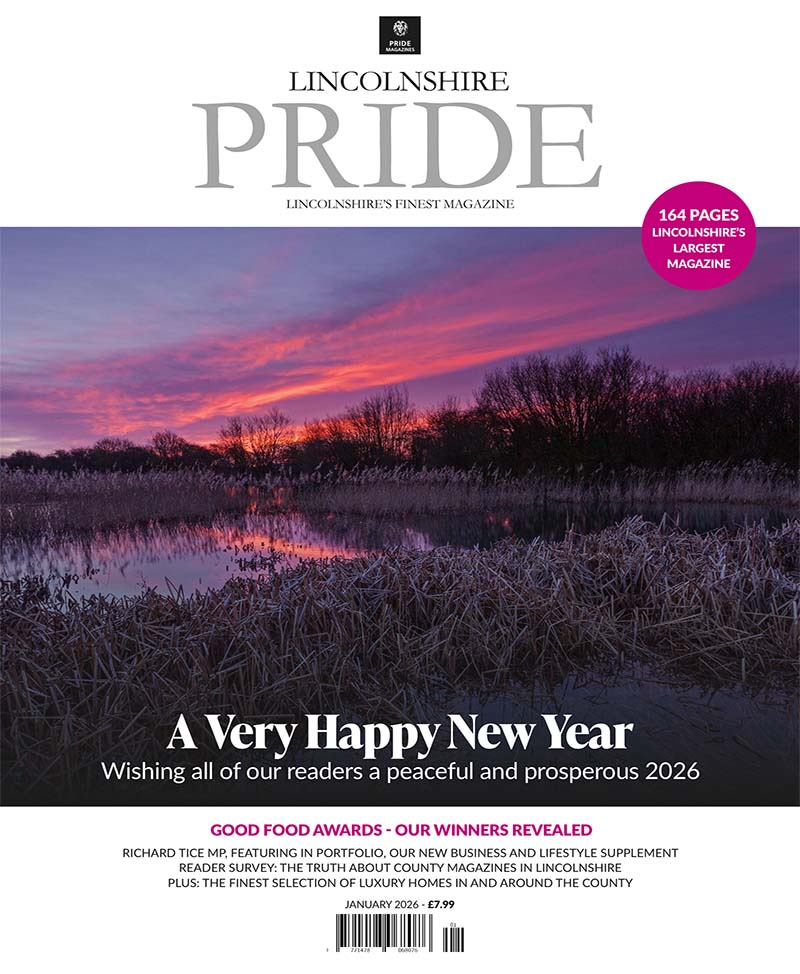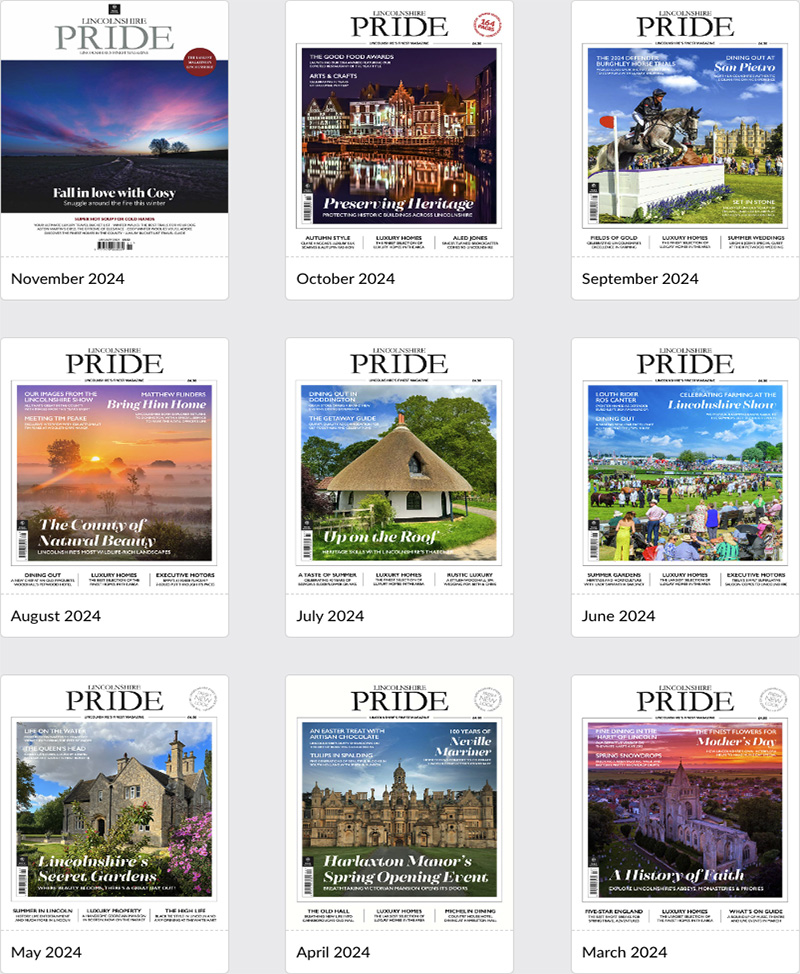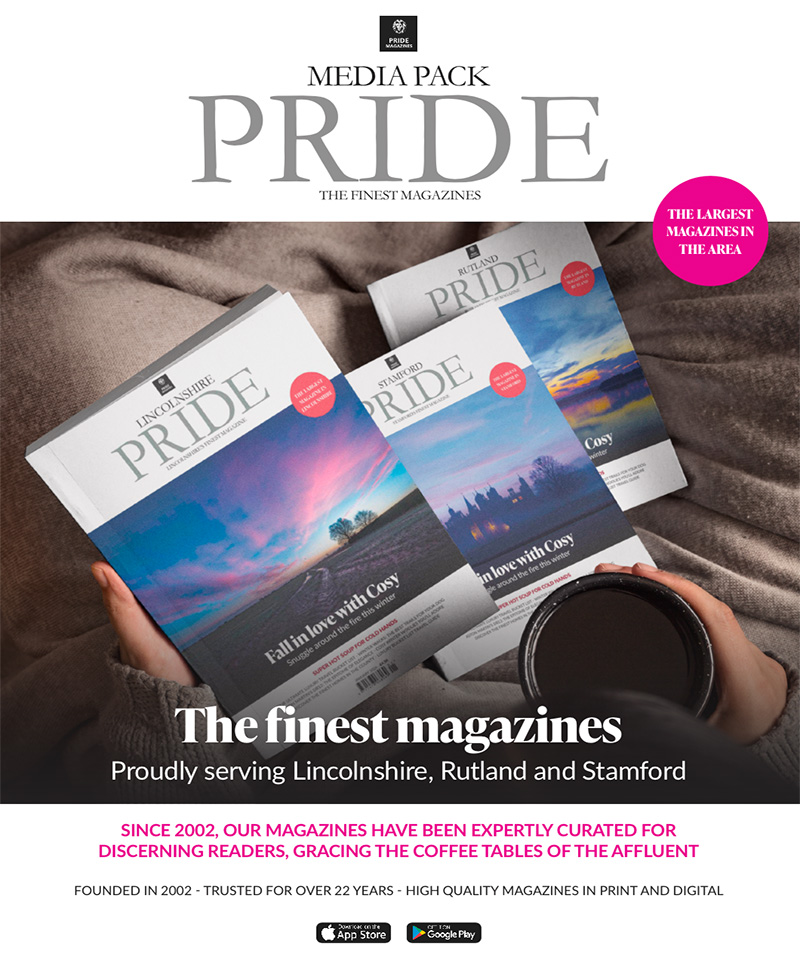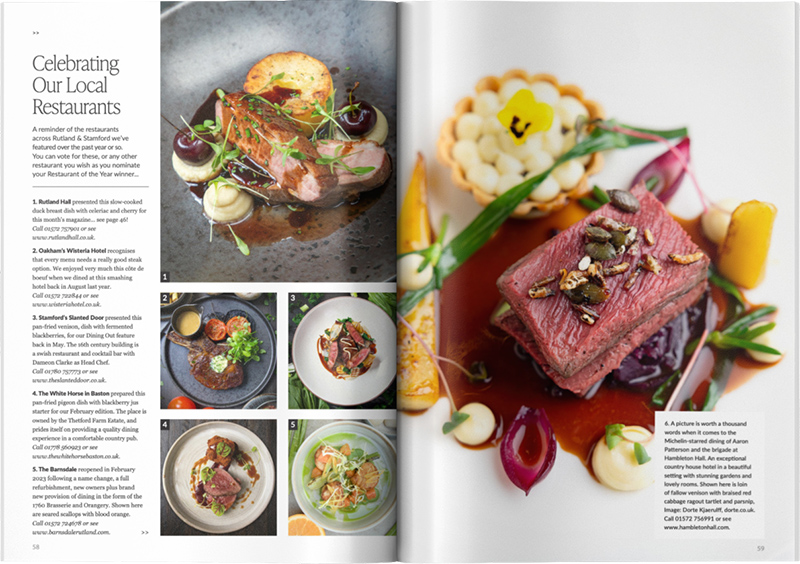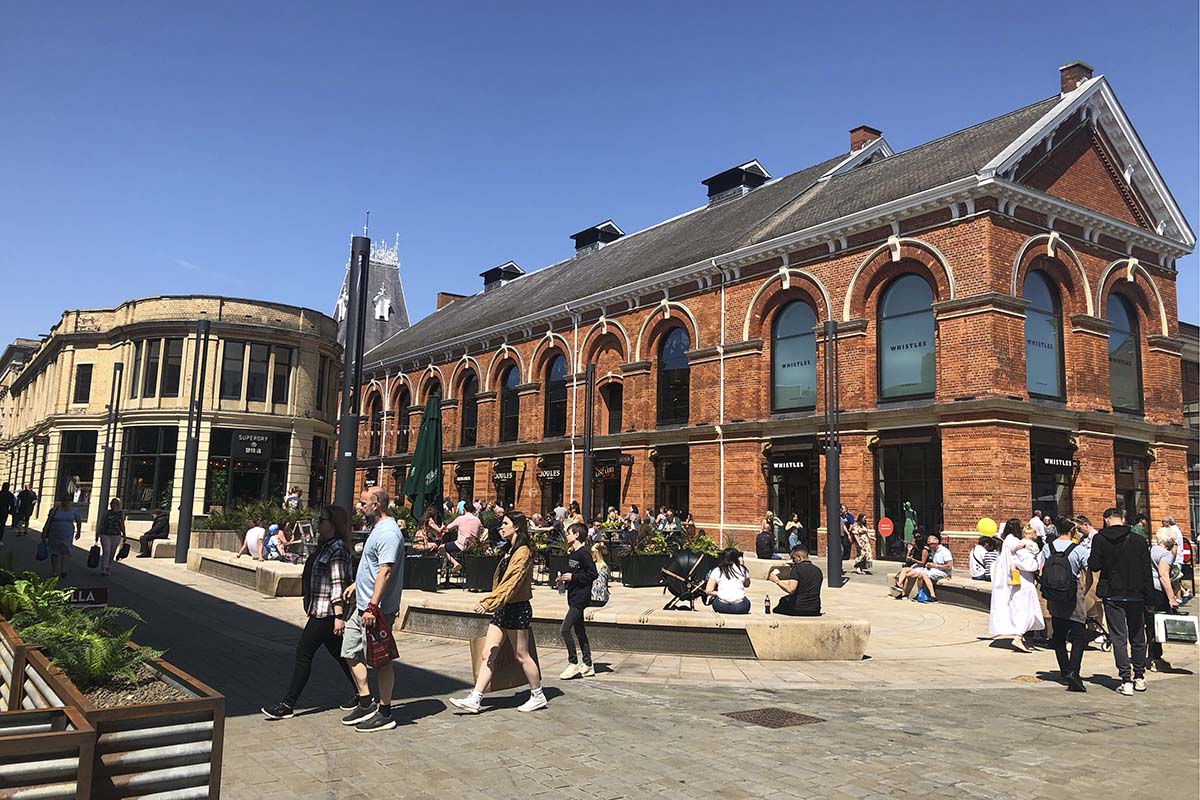
The History of Lincoln – 100 Years of the City
The 1920s – Post-War Recovery and Civic Pride
Following the trauma of the First World War, the 1920s marked a pivotal period of healing, reflection and regeneration for the city of Lincoln. Its substantial contributions to the war effort—particularly through firms such as Ruston & Hornsby, and Fosters who manufactured the first tanks used in battle and aircraft engines, cemented Lincoln’s status as a city of engineering excellence and patriotic service.
Returning soldiers faced a transformed civilian landscape, and the city responded with initiatives to provide employment and housing. Suburban expansion began in earnest, with new housing in Boultham and Monks Road, designed with modern facilities and greater space than their pre-war equivalents. This wave of construction laid the groundwork for future urban planning strategies.
Healthcare too saw development. In 1922, Lincoln County Hospital opened a pioneering X-ray department, a state-of-the-art facility at the time, inaugurated by the 4th Earl of Yarborough.
Cultural life began to blossom again. The Usher Gallery, opened in 1927 thanks to the legacy of local philanthropist James Usher, becoming a beacon of civic pride and fine arts. Housing a unique blend of contemporary and historic artworks, it anchored Lincoln’s reputation as a place of cultural sophistication. The decade closed with the city’s population at around 60,000, marking steady growth as the city stepped confidently into the modern era.
The 1930s – Innovation and Community
Despite the challenges of the Great Depression, Lincoln’s robust engineering base allowed the city to weather the economic storm better than many other parts of the UK. Ruston & Hornsby continued to innovate, expanding its diesel engine production and contributing heavily to export markets. The firm’s strength provided essential employment, stabilising the local economy.
Residential development continued in St Giles, while initial plans began forming for later estates like Hartsholme. Public amenities were improved across the board, including investment in electrification and public sanitation.
Culture thrived too. Cinema became a staple of city life, with grand venues like the Ritz and the Regal opening their doors. The Radion cinema opened on Newport in 1939, closing in 1960 but latterly enjoying a new life as the headquarters of the BBC in Lincolnshire.
In 1937, Stokes High Bridge Café opened in its new location, having moved from the Arcadia Café next door, now Marks and Spencer. Its riverside setting and elegant atmosphere made it a favourite haunt of artists, students and shoppers, becoming one of Lincoln’s longest-running independent cafés.
RAF Waddington, which had first opened during the First World War in 1918 and closed in 1920, reopened in 1937, reinforcing the city’s military relevance, which endures today.
The 1940s – The Home Front and Community
The outbreak of the Second World War in 1939 thrust Lincoln into a new era of urgency and sacrifice. The city’s longstanding industrial prowess was rapidly adapted for the demands of wartime. Ruston & Hornsby converted its production to support the military, manufacturing tank engines and other critical machinery needed on the battlefield. The city once again found itself at the heart of a national effort.
Lincoln’s geographical proximity to several key RAF stations—Scampton, Waddington, and Coningsby—meant that its skies were constantly busy. RAF Scampton, which had been known as Brattleby Cliff since its formation in 1916, was renamed in 1936 and played a leading role in Bomber Command operations, most notably home
to the 617 Dambusters Squadron. These bases were instrumental in housing aircraft, training aircrew, and launching missions that were pivotal to the Allied war effort.
The city endured the effects of war on the home front with resilience and determination. Blackout restrictions, rationing, and the fear of enemy bombing were part of everyday life. Yet community spirit remained unshaken. Local residents opened their homes to evacuees and volunteered for civil defence services. Victory gardens sprung up in private yards and public green spaces, providing fresh produce.
Lincoln Cathedral became a symbol of spiritual solace during this time, its iconic silhouette visible for miles, often serving as a navigational landmark for returning aircrews. Ellis Mill, an 18th-century windmill, ceased operations in 1940 as modern technologies rendered it obsolete. Though no longer active, it stood as a silent witness to the trials of war, a symbol of continuity in uncertain times.
Healthcare infrastructure continued to evolve to meet wartime needs. Lincoln County Hospital expanded in 1939/1940, and again later in 1966 and 1981 reflected the city’s growing healthcare needs. Today, it has over 600 beds and is a major employer within the United Lincolnshire Hospitals Trust with over 8,500 members of staff.
The 1950s – Housing, Heritage and Hope
The post war era saw Lincoln emerge from the shadows of war into a new era of rebuilding and optimism. Britain’s post-war recovery was driven by a national focus on housing and health, and Lincoln was no exception. The city embarked on a large-scale housebuilding programme to address critical shortages caused by wartime destruction and a growing population.
The Ermine Estate, one of the largest council housing developments in Lincolnshire, rose on the northern edge of the city. Designed with modern conveniences and large green spaces, it symbolised the ambition of a new era. Birchwood followed, providing further affordable housing for families. These developments weren’t simply rows of houses—they were carefully planned communities, complete with schools, shops and green areas.
This decade also marked the beginning of Lincoln’s transformation into a civic and cultural centre. Queen Elizabeth II’s visit to the city in 1958 was a major event, drawing large crowds who gathered to see the newly crowned monarch. The Queen opened Pelham Bridge in the city and was presented with the sword of Richard II, given to the city in 1387.
The Lincolnshire Show—already a staple of the county’s agricultural heritage—found its permanent home at the Lincolnshire Showground in 1959. The move enabled organisers to expand the event, which became a vital celebration of rural life, industry and innovation. To this day, it remains one of the UK’s largest two-day agricultural shows, attracting tens of thousands annually.
Lincoln’s architectural and cultural heritage was increasingly cherished during this period. Restoration work was undertaken at the Cathedral precincts and along parts of the Roman wall.
Another grizzly civic institution that saw its final chapter in this decade was HM Lincoln Prison’s history as a site for capital punishment. Built in 1872, it witnessed its last judicial execution in 1961, just after the decade ended. The move was part of a wider reassessment of justice in post-war Britain.
The 1960s – Expansion and Education
The 1960s were a transformative decade for Lincoln, a time when post-war optimism evolved into forward-thinking development. The era brought with it not only bricks and mortar but also bold visions for education, infrastructure and cultural advancement, all of which reshaped Lincoln’s landscape and spirit.
In 1969, the Museum of Lincolnshire Life opened its doors. Housed in a Victorian barracks on Burton Road, the museum quickly became one of the most important cultural resources in the county. Its extensive collections, including agricultural machinery, wartime artefacts and social history exhibits, preserved the living memory of Lincolnshire’s rural and industrial past. It was also an early example of how Lincoln could sensitively repurpose its historical buildings for modern civic use.
Civic development continued across the expanding suburbs. Residential growth reached into Bracebridge, Skellingthorpe and Hartsholme, with post-war town planning principles placing emphasis on access to green spaces, local amenities, and community cohesion. These areas helped to accommodate Lincoln’s steadily growing population and modernised its housing stock.
In 1962, architect and engineer Sam Scorer proposed a visionary regeneration plan for the Brayford Wharf area. Although actual redevelopment wouldn’t begin until the 1990s, Scorer’s early vision highlighted a changing attitude toward urban renewal and foreshadowed Lincoln’s eventual transformation into a university city with a revitalised waterfront.
Military and aviation developments also remained prominent. RAF Waddington transitioned into a vital Cold War base, from the late 1950s into the 1960s, hosting Avro Vulcan V-bombers—nuclear-capable aircraft that stood at the heart of the UK’s strategic deterrent during this tense period. Lincoln’s ties to aviation deepened further, intertwining national defence with the city’s evolving identity.
And in the swinging sixties, the city hosted the Lincoln Pop Festival on 30th May 1966… performers included The Who, The Yardbirds, and the Small Faces… surprisingly, attendance was poor, and the event wasn’t repeated. However, The Kinks had been more successful performing at the ABC Cinema in Lincoln a couple of years earlier, and live music would soon return to Lincoln. Speaking of smash hits, The Lincoln Hotel on Eastgate was a new addition in 1967, with its striking modernist design. It was design to accommodate a new influx of tourists keen to indulge in British culture amid a boom in home-grown pop music and of course, England’s football victory!
The 1970s – Revival and Heritage
As the 1970s dawned, Lincoln found itself at a crossroads between traditional civic identity and the push for modernisation. Nationally, this was a decade marked by economic uncertainty, strikes, and changing social values, but in Lincoln it sparked both introspection and opportunity. The city’s leadership responded with a renewed emphasis on local governance, heritage conservation, and urban improvement.
At the heart of this civic reinvention was the construction of Lincoln City Hall, completed in 1973. Its clean-lined, modernist architecture symbolised a new chapter in local governance—one rooted in transparency, accessibility, and administrative efficiency. The new building consolidated several municipal departments, streamlining city services and giving local government a clear physical and symbolic presence.
Modernist, but a little less well-loved, was the city’s new police station, built in 1973. It’s still hoping that the ‘Ryvita building,’ on West Parade so-called because of its unusual appearance, will be sold soon and find a new purpose.
In 1970, the Grade II-listed statue of Alfred, Lord Tennyson—sculpted by the celebrated artist G.F. Watts and standing beside the Cathedral—was carefully restored.
Cultural and historic preservation was also seen in the restoration of Ellis Mill. The historic 18th-century windmill, which had ceased operation during the Second World War, then lovingly restored by the Lincoln Civic Trust and reopened in 1977. It once again turned its sails over the city skyline, not as an industrial tool but as a living heritage asset, connecting residents to Lincoln’s agrarian and industrial roots.
The city also expanded its post-war housing schemes in Hartsholme and Ermine, responding to the city’s population growth and evolving expectations for residential quality. New housing estates emphasised access to schools, shopping centres, and green belts, consistent with modern planning ideals of balanced urban living.
The 1970s also marked a period of rekindling international ties. In 1972, grapevines were gifted to Lincoln’s Bishops’ Palace by the city’s German twin town, Neustadt-an-der-Weinstrasse. The vines were planted in the Palace grounds and became an enduring symbol of reconciliation, friendship and European unity in the post-war world. Sadly, Châteux du Lincoln didn’t become a recognised brand.
While Lincoln’s economy was not immune to national trends of inflation and industrial contraction, the city’s resilience was evident in its ability to adapt. Ruston’s, still a major employer, underwent a period of corporate restructuring in response to global competition, laying the groundwork for its eventual transition into Siemens and its work in the turbine industry which would employ 1,500 people.
The 1980s – Culture, Communication and the Cold War
In the 1980s, Lincoln underwent a dynamic shift that blended traditional heritage with modern communication and cultural vibrancy. Nationally, it was a decade shaped by technological innovation, economic deregulation, and a surge in popular culture—all of which found their echoes in Lincoln’s own evolution.
A landmark moment came in 1982 with the launch of BBC Radio Lincolnshire. As the county’s first dedicated local radio station, it gave a new voice to the region. Broadcasting news, local features, music and community affairs, it not only connected people across Lincolnshire but also fostered a new sense of identity. The station helped amplify local talent, supported cultural initiatives and launched with the sound of Lincoln Cathedral’s bells pealing.
The same year marked the debut of one of Lincoln’s most cherished events: the Lincoln Christmas Market. Initially a modest exchange with the city’s German twin town of Neustadt-an-der-Weinstrasse, the market was hosted within the historic Bailgate and Cathedral Quarter.
It quickly grew into one of Europe’s largest and most atmospheric festive markets. With timber stalls, lantern-lit alleyways, and seasonal scents wafting through the medieval streets, it became a powerful expression of Lincoln’s heritage and hospitality.
Aviation also reached new heights in the 1980s. In 1983, the world-renowned Red Arrows aerobatic display team relocated to RAF Scampton. Their arrival established an enduring connection between the city and the RAF’s proudest aerial ambassadors. Their distinctive diamond formations became synonymous with major civic events, flyovers and summer air displays, drawing visitors and enthusiasts from across the country.
Civic life was equally shaped by royal attention. In July 1985, Princess Diana visited Lincoln to officially open the newly redeveloped Lincoln County Hospital. Her visit brought a wave of national attention and underscored the city’s growing stature in the East Midlands. The hospital itself was emblematic of ongoing public investment in healthcare infrastructure.
Theatre and live performance also flourished during this period. The Lincoln New Theatre Royal—originally opened in 1893 and extended in 1907—continued to stage plays, pantomimes and variety acts, maintaining its status as a cultural heart of the city.
It was here in 1959 that the now-celebrated actor Sir Patrick Stewart made his professional debut, starring in a production of Treasure Island. This legacy carried into the 1980s as the venue nurtured both established performers and rising local talent.
The decade also brought renewed focus to Lincoln Drill Hall, a venue with a rich history dating back to 1890. Though its most legendary moment came on New Year’s Eve 1963 when it hosted The Rolling Stones, the 1980s saw continued use as a venue for live music, dance and theatre, reinforcing its role in Lincoln’s cultural identity.
Economically, while the city was affected by the national industrial decline, local resilience prevailed. Ruston’s remained a key employer, even as it began its slow evolution towards becoming part of the global Siemens conglomerate.
The 1980s proved to be a defining period for Lincoln, embedding traditions such as the Christmas Market and establishing cultural landmarks that continue to influence the city’s identity today. It was a decade of aerial spectacle, royal recognition and a renewed pride in local voice and performance.
The 1990s – Education, Regeneration and Waterside Growth
The 1990s ushered in a period of urban revitalisation and educational transformation in Lincoln. While much of the UK experienced social and economic change during this decade, Lincoln channelled these forces into reshaping its city centre, waterfront, and academic identity.
One of the most transformative developments came with the foundation of what would become the University of Lincoln.
Tracing its origins to the Hull School of Art in 1861, the institution evolved over several decades and several names—from Endsleigh College to Hull College, then the University of Humberside in 1992, and finally the University of Lincolnshire and Humberside in 1996.
By the end of the decade, it was clear that Lincoln’s identity as a university city was solidifying, offering not only new academic opportunities but injecting the city with energy, ambition and thousands of students.
A critical catalyst for urban regeneration was the redevelopment of the Brayford Pool area. Long overlooked, this once-industrial waterway was transformed into a vibrant hub of culture, dining, and education. The university’s investment in its Brayford Campus anchored the area, which soon welcomed new bars and restaurants along the waterfront. It became a symbol of Lincoln’s ability to modernise while embracing its historic setting.
Retail also evolved in the city centre. In 1992, the Waterside Shopping Centre opened its doors, bringing a sleek, enclosed shopping mall to the heart of Lincoln. It attracted a variety of national retailers and revitalised the High Street, offering a modern shopping experience in contrast to traditional open-air markets and independent stores.
Meanwhile, planning permission was granted in 1992 for the ambitious Burton Waters Marina development. Although construction didn’t commence until 1999, its approval marked a significant moment in the city’s expansion to the west. Designed as a luxury marina and residential village, it offered a waterside lifestyle previously unavailable in Lincoln. By the early 2000s, it would become home to more than 850 residents, contributing to Lincoln’s growing reputation as a desirable and diverse place to live.
Fundraising also took off in February 1993 for a new air ambulance service which began operating in 13th April 1994, when they lifted their very first patient. Since then, the service – which receives no government or NHS funding – has flown over 26,000 potentially life-saving missions.
And finally, film fans were thrilled in November 1995 when Lincoln’s Brayford Wharf saw the opening of the Odeon, the city’s new six-screen cinema. Pierce Brosnan would make his Bond debut in GoldenEye or you could see Woody and Buzz become best friends in Toy Story.
The 2000s – Innovation and Institutions
The turn of the millennium marked a bold new chapter for Lincoln. The city embraced the 21st century with a renewed sense of civic pride, capital investment, and cultural confidence. Building on the momentum of the 1990s, Lincoln’s leaders, developers and residents committed to reshaping its image as a city of culture, innovation and opportunity.
At the heart of this transformation was the continued expansion of the University of Lincoln. Officially adopting its current name in 2001, the university became one of the UK’s fastest-growing academic institutions. Throughout the 2000s, its Brayford Campus expanded significantly, including the construction of modern lecture halls, research centres and accommodation blocks. By the end of the decade, the university had firmly established itself as one of Lincoln’s largest employers and a key economic driver.
This expansion coincided with the development of the Riseholme Campus on the northern edge of the city. Covering nearly 500 acres, the site offered agricultural, equine and land-based courses, reinforcing the university’s role in promoting both urban and rural education.
Culture and heritage were not left behind in this wave of progress. The Collection, a major new museum and gallery complex, opened in 2005. Combining the former City and County Museum with the Usher Gallery, it created a vibrant space where archaeology and contemporary art coexisted. The museum featured artefacts from Lincoln’s Roman past and hosted touring exhibitions, quickly becoming a cornerstone of Lincoln’s cultural landscape.
The Engine Shed, a purpose-built music and entertainment venue owned by the university, opened in 2006. Costing £6 million and boasting a capacity of 1,800, it attracted major national and international acts to the city for the first time in decades. The venue soon earned a reputation as one of the East Midlands’ premier live entertainment destinations.
The decade also witnessed the opening of the Epic Centre at the Lincolnshire Showground in 2009. A cutting-edge, environmentally sustainable events space, it was designed to host agricultural shows, exhibitions, conferences, and festivals. Its arrival underscored Lincoln’s importance as a regional events hub and demonstrated the city’s commitment to sustainable development.
Speaking of Epic, Tom Hanks was beloved by fascinated locals who flocked to Lincoln Cathedral to try to see the star as he filmed the epic Da Vinci Code using the Cathedral as a location.
Lincoln’s High Street underwent partial pedestrianisation in the 2000s, making the area more attractive to shoppers and throughout the 2000s, local debate continued over the need for a Lincoln Eastern Bypass to alleviate congestion in the city centre. While construction wouldn’t begin until the next decade, the 2000s saw intensive planning and public consultation phases.
And finally, Lincoln’s High Street enjoyed a makeover was enhanced with modern surfaces and street furniture, blending contemporary design with the city’s medieval streetscape.
The 2010s – Restoration and Recreation
As the 2010s unfolded, Lincoln’s continued evolution combined historic restoration with modern innovation, solidifying its place as one of the most vibrant and ambitious cities in the East Midlands. The decade witnessed record levels of investment in infrastructure, heritage, tourism, education, and culture, all contributing to the city’s rising national and international profile.
At the heart of this transformation was a renewed commitment to celebrating Lincoln’s heritage. One of the most significant projects was the £22 million Lincoln Castle Revealed initiative, funded in part by the Heritage Lottery Fund. The project included the refurbishment of the medieval walls, and restoration of the city’s Victorian prison as well as new interpretation and the Heritage Skills Centre.
Completed in 2015, the project restored and revitalised the entire castle complex, opening it fully to the public for the first time. It included a new visitor centre, improved access to the medieval walls, and the creation of the David Ross Magna Carta Vault—home to one of only four surviving original 1215 Magna Carta documents. This ambitious scheme transformed the castle into a world-class heritage attraction and reinforced Lincoln’s central role in the story of British democracy.
Preservation efforts extended to ancient structures. Newport Arch—one of the last Roman gateways still in use by traffic—underwent a £140,000 renovation and was removed from the English Heritage At Risk register in 2014. The Medieval Bishops’ Palace, already steeped in ecclesiastical history, benefitted from a £2.5 million restoration programme completed by English Heritage in 2023.
Heritage Lincolnshire played a key role in protecting and restoring local architecture. Notable efforts included the restoration of the Wonky House on Steep Hill—a famously crooked historic building—as well as the beginning of renovation works on Greyfriars, a rare surviving Franciscan friary with deep medieval roots.
Elsewhere, Siemens underscored its commitment to the city with a £4 million investment in a new research and development facility in 2012. The facility focused on innovative gas turbine technologies and contributed to Lincoln’s global reputation as a centre of precision engineering. Also new on the city’s landscapes were the High Street Level Crossing Bridge in 2016 and the commencement of work on the Lincoln Transport Hub, at a cool £30m.
The University of Lincoln expanded its student population to over 20,000 during this time, whilst Bishop Grosseteste University gained full university status in 2012 and broadened its reputation in teacher training, education studies, and humanities.
In 2018 the International Bomber Command Memorial opened at Canwick, following fundraising from 2011 spearheaded by the late Lord Lieutenant of Lincolnshire, Anthony Worth. The site covers 10 acres with its 31m spire at its centre.
The 2020s – Redevelopment and Renewal
The 2020s began under the cloud of global uncertainty, as the COVID-19 pandemic forced cities around the world to reassess priorities and reimagine public life. In Lincoln, however, adversity became a catalyst for creativity, resilience, and renewal. The city faced the challenges of lockdowns, disrupted tourism, and economic hardship with characteristic unity and determination.
One of the first visible signs of renewal came in the form of the Cornhill Quarter redevelopment—a flagship regeneration project designed to reinvigorate the heart of the city. This ambitious £70 million scheme introduced more than 150,000 square feet of high-quality retail and hospitality space, a new public square, and an enhanced pedestrian experience. Alongside this was a £1.5 million urban realm investment and £30 million directed into infrastructure, including a striking new transport hub featuring a modern bus station and multi-storey car park. Together, these changes redefined Lincoln’s city centre, improving connectivity and supporting the return of footfall following the pandemic.
The reopening of the historic Cornhill Market in 2023 was a moment of civic pride. The sensitively refurbished Victorian building—now a stylish indoor market—became a lively destination for local producers, artisans and independent traders. It signalled a revival of Lincoln’s long-standing market culture and embodied the city’s ongoing support for local enterprise.
Green space initiatives also came to the fore. In 2020, Dean’s Green—an often-overlooked section of land beside Lincoln Cathedral—was reopened to the public for the first time in over 40 years. Transformed into a beautifully landscaped garden complete with flower beds, benches and a tranquil water feature, it provided a haven of peace at the city’s spiritual and architectural heart. As people sought open, accessible spaces during the pandemic, Dean’s Green became a treasured retreat.
Lincoln’s long-standing connection to aviation was renewed when the Red Arrows aerobatic team relocated from RAF Scampton to RAF Waddington in 2022. The move kept the iconic squadron within touching distance of the city, preserving its deep links to the RAF. Waddington, now also home to the Intelligence, Surveillance, Target Acquisition and Reconnaissance (ISTAR) Force, cemented its role as a high-tech strategic base and a key player in UK defence.
Meanwhile, healthcare and emergency services took centre stage. The Lincolnshire and Nottinghamshire Air Ambulance Trust continued to serve the county around the clock with its state-of-the-art AW169 helicopter, introduced in 2021. The charity, which receives no direct government or NHS funding, now requires £13 million a year to maintain operations. Its continued presence underscores the critical importance of community support and public generosity in sustaining life-saving services.
Business innovation also gained ground. Stirlin Business Park, launched in 2016, continued to expand into the 2020s, offering high-quality workspaces for a growing number of SMEs. Its presence helped diversify the local economy and attracted investment from sectors such as digital technology, automotive services and logistics.
As of the mid-2020s, Lincoln is a city that continues to adapt and flourish—rooted in its ancient heritage, shaped by centuries of civic pride, and poised to meet the demands of a changing world.
Whether through its restored marketplaces, rejuvenated green spaces, or modern universities and transport hubs, Lincoln enters the decade not as a city resting on history, but as one confidently writing its next chapter.
See images from this story in our June edition, online now at https://www.pridemagazines.co.uk/lincolnshire/view-magazines?magazine=June-2025


